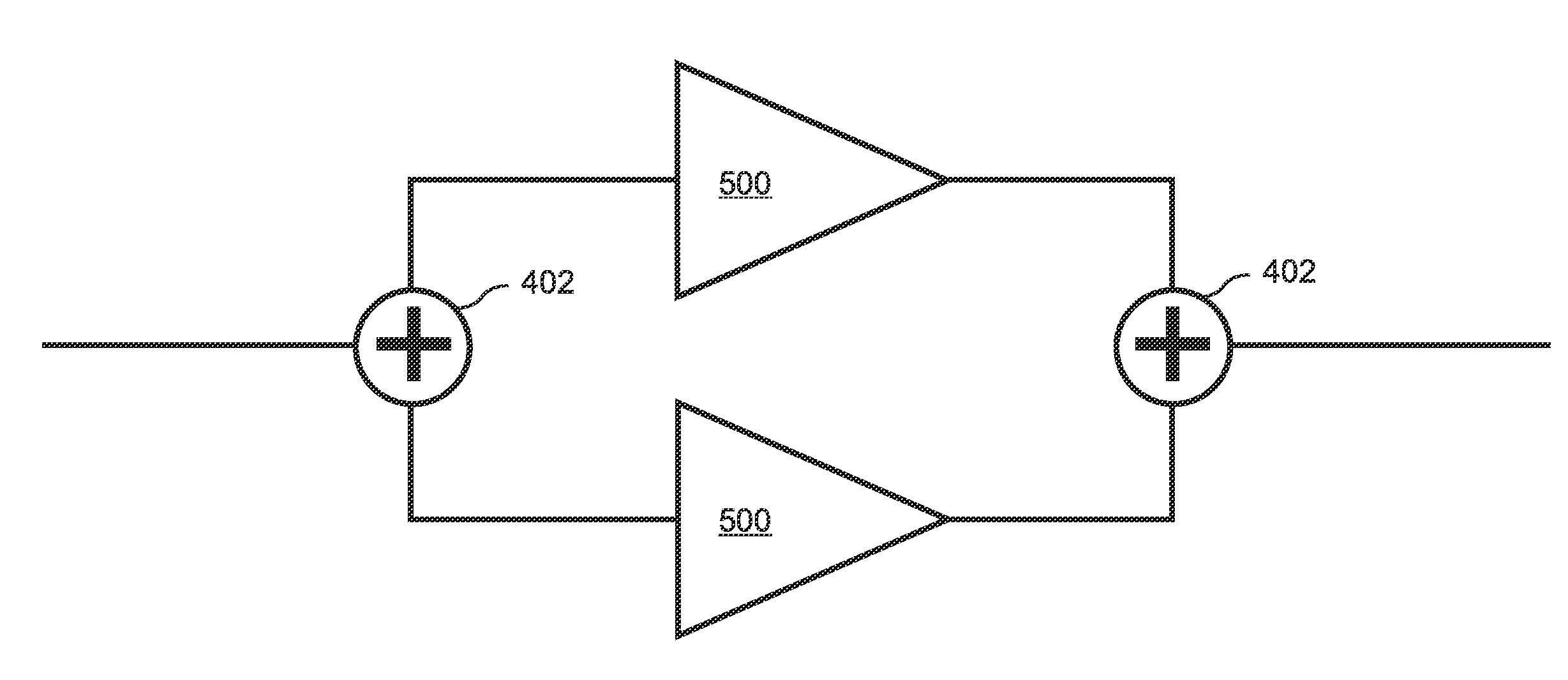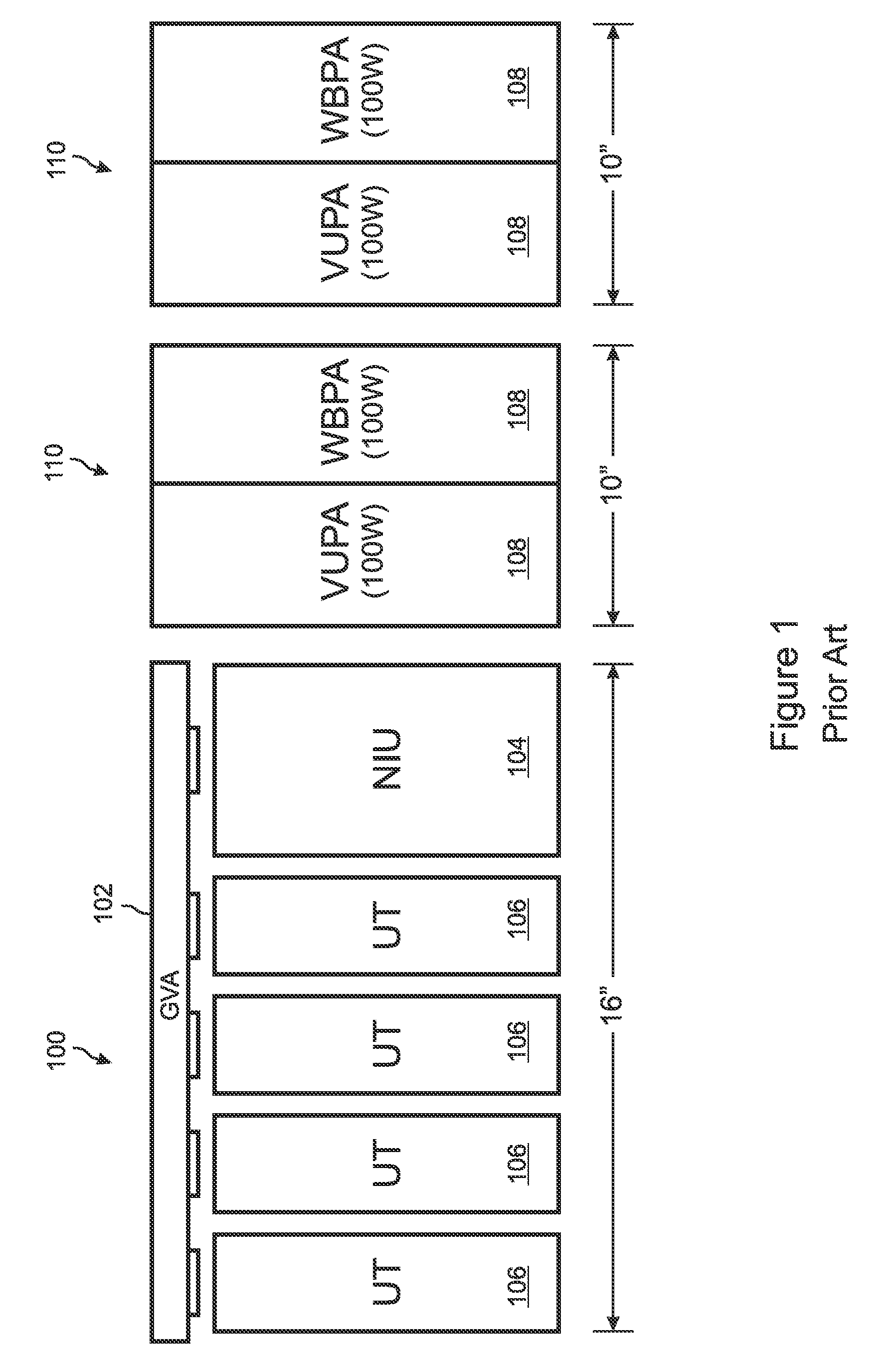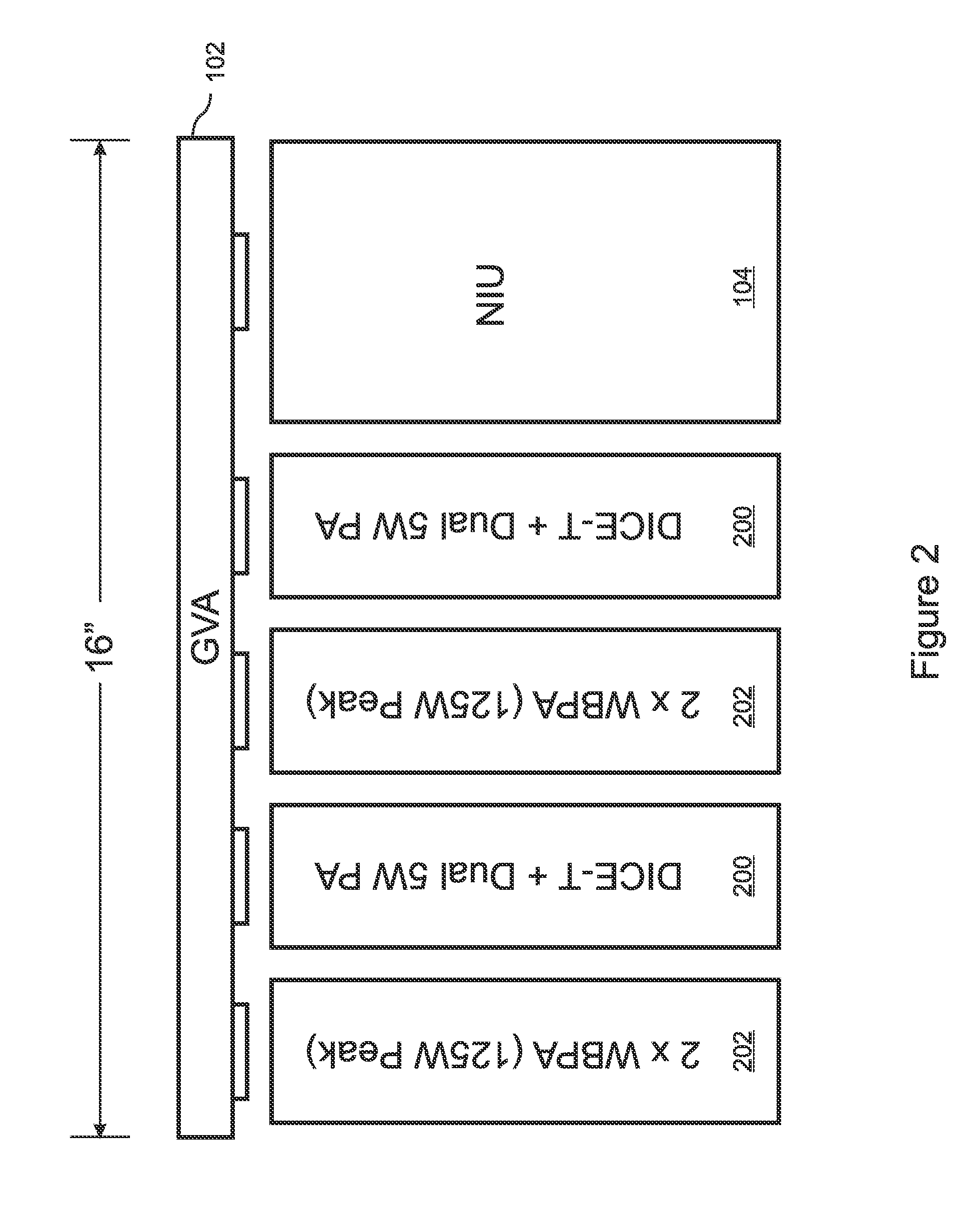Compact modular upgrade for gmr software defined tactical radio
a tactical radio and modular technology, applied in the direction of transmission, electrical equipment, etc., can solve the problem of low power consumption of components
- Summary
- Abstract
- Description
- Claims
- Application Information
AI Technical Summary
Benefits of technology
Problems solved by technology
Method used
Image
Examples
Embodiment Construction
[0030]With reference to FIG. 1, the present GMR design of the prior art includes a main unit 100 which, by itself, consumes most or all of the SWaP in which the entire system was intended to be contained. The main unit 100 includes a Ground Vehicle Adaptor (GVA) 102 that accommodates a Network Interface Unit (NIU) 104 and four modular Universal Transceiver or “UT” modules 106, each of which provides the low power control for one radio channel. Because no more space is available in the main unit 100, the power amplifiers 108 for the system are contained in two separate amplifier racks 110, each of which contains two power amplifiers 108 having a nominal output power of 100 W each.
[0031]Taken altogether, the GMR design significantly exceeds its SWaP goals, consuming too much space and too much power, and having a tendency to overheat. Yet a significant investment has been made in the design, especially in the NIU software and security architecture.
[0032]With reference to FIG. 2, the p...
PUM
 Login to View More
Login to View More Abstract
Description
Claims
Application Information
 Login to View More
Login to View More - R&D
- Intellectual Property
- Life Sciences
- Materials
- Tech Scout
- Unparalleled Data Quality
- Higher Quality Content
- 60% Fewer Hallucinations
Browse by: Latest US Patents, China's latest patents, Technical Efficacy Thesaurus, Application Domain, Technology Topic, Popular Technical Reports.
© 2025 PatSnap. All rights reserved.Legal|Privacy policy|Modern Slavery Act Transparency Statement|Sitemap|About US| Contact US: help@patsnap.com



